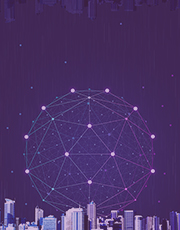Quantum sensors unlock a range of new applications through their dramatically increased sensitivity. IDTechEx's Quantum Sensor Market 2025-2045 report provides extensive analysis of the quantum sensor market, including over 40 company profiles with technology developers and end users to cover 20 quantum sensing technology areas including multiple types of atomic clocks and magnetic field sensors. Applications of quantum sensors in electric vehicles, GPS denied navigation, medical imaging, quantum computing and communications are comprehensively explored, with granular 20-year forecasts segmented by technology.
Quantum sensors use quantum phenomena to enable highly sensitive measurements of a range of physical properties. These include time (atomic clocks), electric and magnetic fields, current, gravity, linear and angular acceleration, light (single photon detectors), and more. Superior sensitivity relative to their classical counterparts means that quantum sensors are attracting interest for applications including within electric and autonomous vehicles, brain scanners, quantum computers, underground mapping equipment, satellites, microscopes, and even consumer electronics. Furthermore, growing hype and synergistic development with other quantum technologies such as computing and communications assists in driving interest and investment into the quantum sensor space.
Wide-ranging technologies and applications
Given the diversity of technologies and target applications, there is significant variation of technology readiness level (TRL) and addressable market size across the quantum sensor space. For example, millions of chip-scale tunneling magneto resistance (TMR) sensors have been sold into the automotive sector for remote current sensing, whilst biomagnetic imaging with optically pumped magnetometers (OPMs) is still largely at the prototyping and clinical trial stage. Similarly, bench-top sized atomic clocks have been used for years for research and accurate time tracking, whilst chip-scale devices have yet to become mainstream. Through conversations with both research centers and technology developers, this report assesses the technical and commercial readiness level of each underlying quantum sensing technology and provides a roadmap for future development.
Each quantum sensing technology is analysed in turn, discussing the fundamental operating principles, miniaturization and manufacturing challenges, competitive landscape, and industry players. The report covers atomic clocks, quantum magnetic field sensors, quantum gyroscopes, quantum accelerometers, quantum gravimeters, quantum RF sensors, single photon detectors, quantum imaging, and components for quantum sensors. Each quantum sensor category is assessed using SWOT analyses and technical benchmarking tables. Key players are classified in terms of their capabilities and aims, and products (where available) are benchmarked against each other and their classical incumbents. Applications explored include timing and inertial navigation, remote current sensing, biomagnetic imaging, underground asset mapping, quantum computing readout, gas LiDAR, and RF testing.




